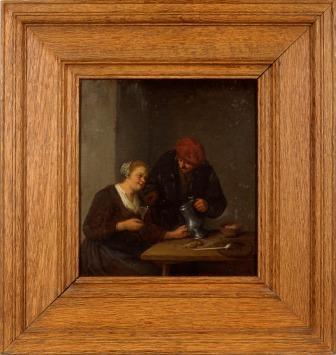Recommendation
In a letter dated 2 May 2006, the Minister for Education, Culture and Science (OCW) asked the Restitutions Committee to issue a recommendation regarding the application dated 5 April 2006 by M.N.-M. (hereafter: applicant 1) for the restitution of the painting Couple in an Interior based on Adriaen van Ostade. In a letter dated 16 August 2006, the Minister for OCW made a second request for a recommendation by the Restitutions Committee in relation to this painting. This request was submitted on 31 May 2006 by D.M.H. on behalf of his children S.S.H. and M.I.H. (hereafter: applicants 2). The painting in question is part of the Netherlands Art Property Collection under the custody of the national government (NK 2884) and is housed in a depot of the Netherlands Institute for Cultural Heritage in Rijswijk. Applicant 1 and applicants 2 are jointly referred to as applicants in this recommendation. The Committee has dealt with the restitution applications collectively. Due to the age of applicant 1, this request has been given priority.
